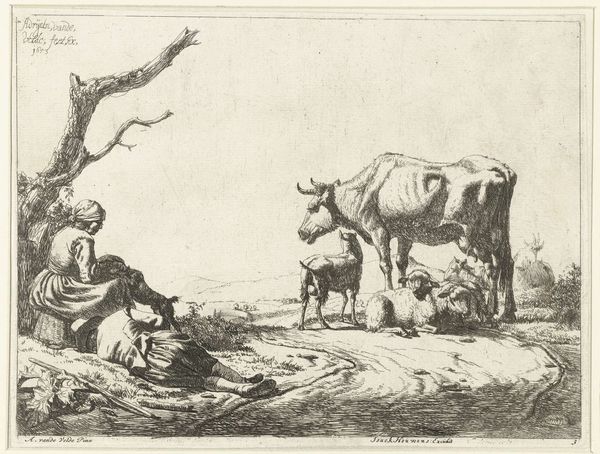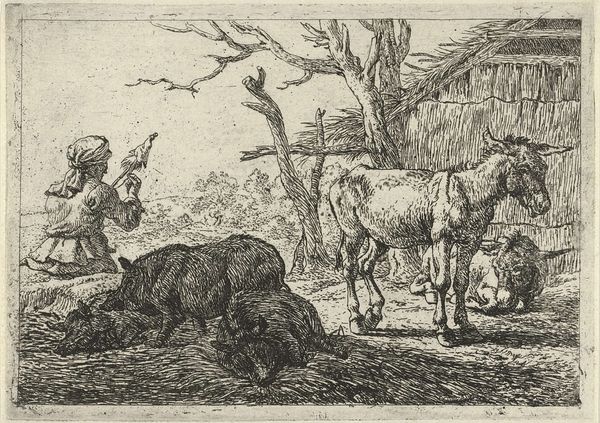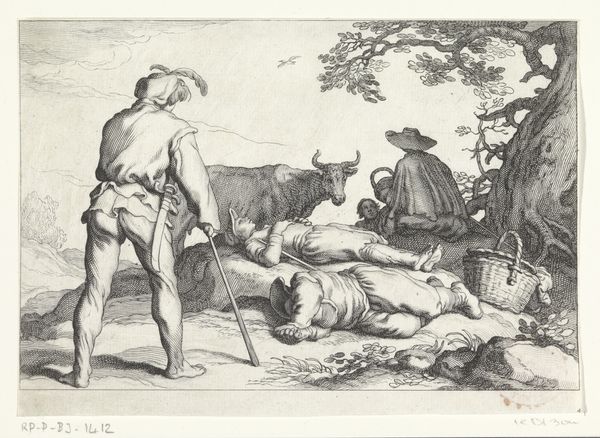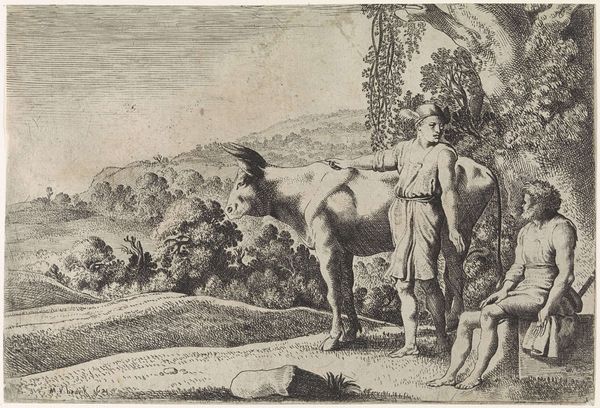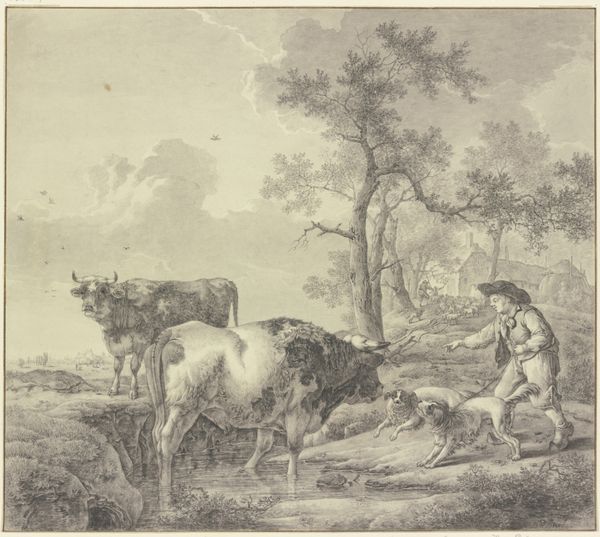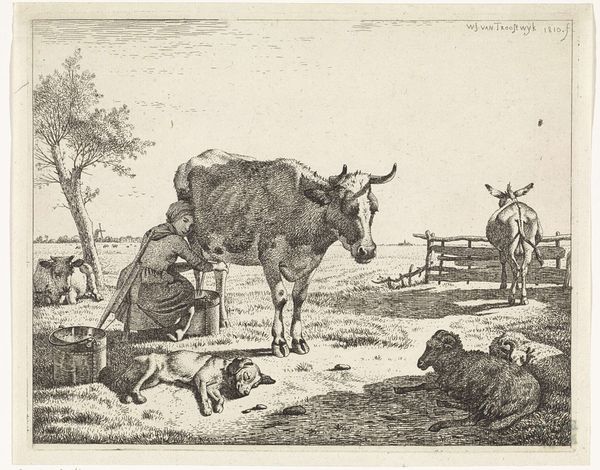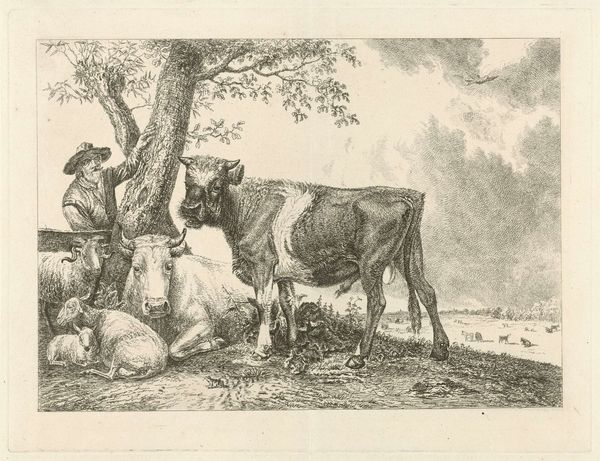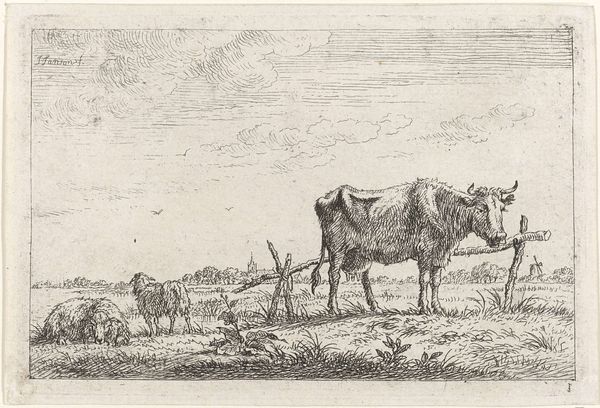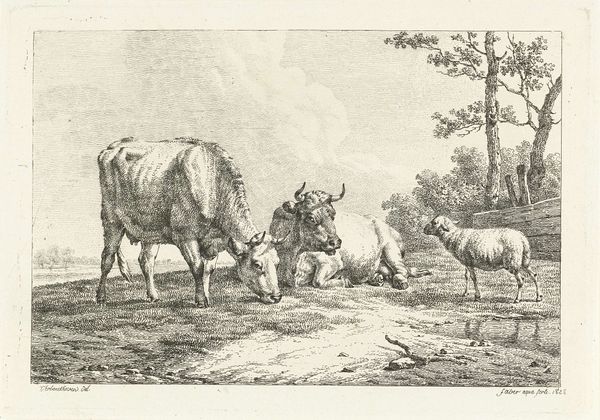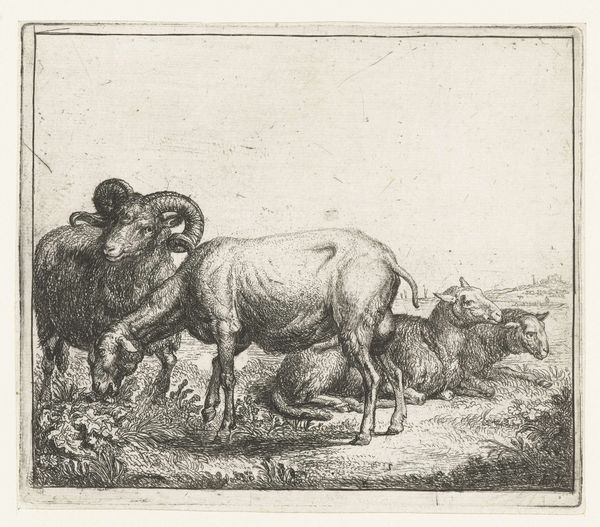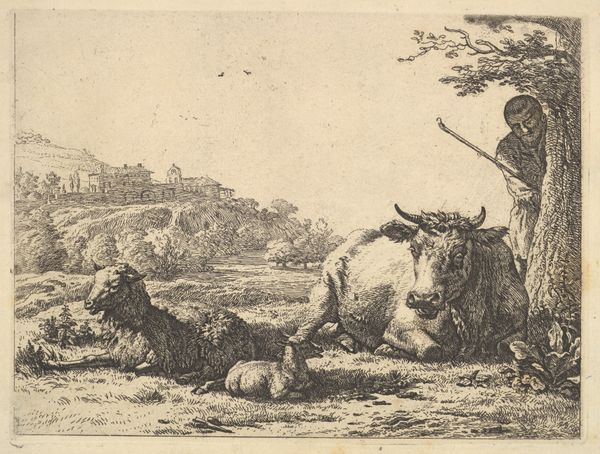
print, etching, engraving
#
narrative-art
#
baroque
# print
#
pen sketch
#
etching
#
greek-and-roman-art
#
landscape
#
figuration
#
engraving
Dimensions: height 128 mm, width 190 mm
Copyright: Rijks Museum: Open Domain
Moyses van Wtenbrouck created this etching, "Argus asks Mercury to Stay," sometime in the first half of the 17th century. In it, we see a scene from classical mythology rendered in the style of the Dutch Golden Age. Mercury, easily identified by his winged helmet, is asked to stay by Argus. This moment comes from the story of Io, a nymph who was turned into a cow by Zeus to hide her from his wife, Hera. Hera, not fooled, tasks the hundred-eyed giant Argus to guard Io. Mercury is then sent by Zeus to free Io. Here, the artist invites us into a pastoral landscape, a popular subject for Dutch artists in this period, who were keen to celebrate the beauty and bounty of their newly independent nation. But the real subject of this image is the history painting. How can artists use history to convey moral messages? To understand this print fully, we might turn to texts from classical antiquity, such as Ovid's Metamorphoses. We would also look into the rise of the Dutch Republic and its artistic institutions. In doing so, we can examine how the artist navigates the complex relationship between the classical past, the demands of the present, and the moral function of art.
Comments
No comments
Be the first to comment and join the conversation on the ultimate creative platform.
